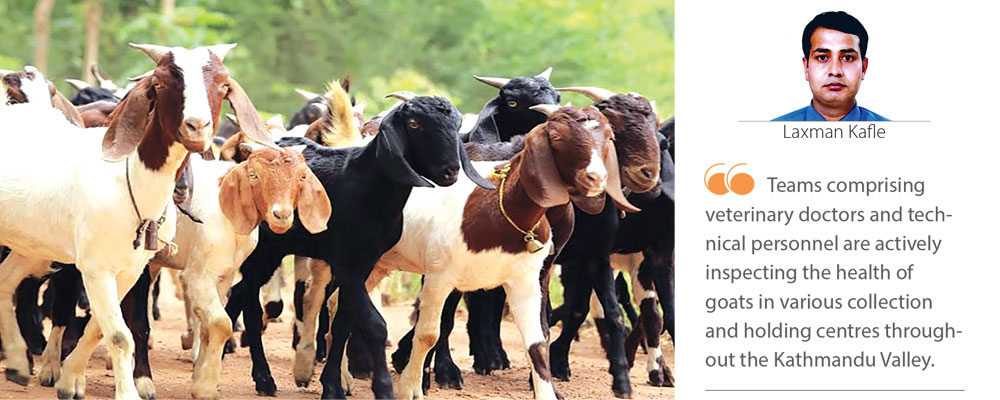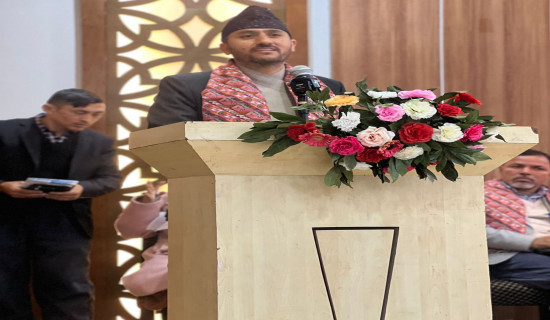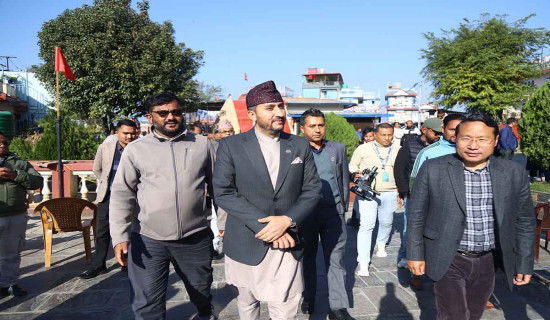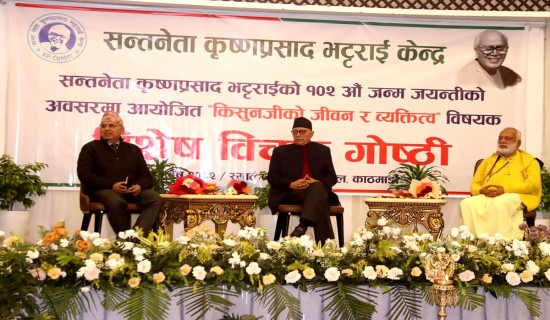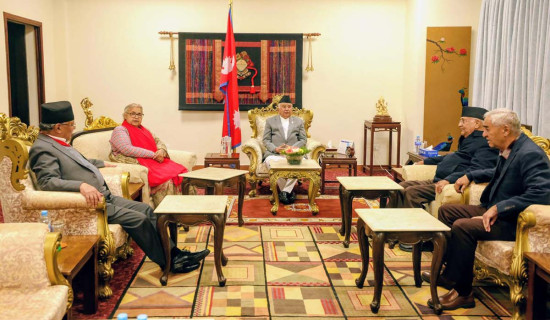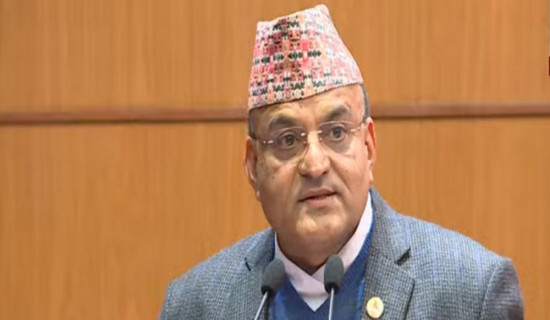- Wednesday, 24 December 2025
Exceeding Meat Consumption In Dashain
The biggest celebration for all Nepalis is Dashain. The occasion offers the chance to bring the entire family together, enjoy delectable food, and receive Tika, Jamara, and blessings from elders, especially grandparents and parents. During Dashain, a significant number of individuals embrace the festive spirit by indulging in a feast of mutton and various meat delicacies.
This culinary tradition is substantiated by statistical data. Dashain, a festival dedicated to the worship of goddesses through ritualistic animal sacrifices, sees people relishing the consecrated meat as Prasad. The worship involves honouring nine goddesses, several of whom are venerated through the offering of animal sacrifices. Most households have a tradition of sacrificing goats, chickens, ducks, and buffaloes in their homes based on their personal and cultural beliefs.
For all non-vegetarians, meat is their first choice of food in Dashain. Indeed, dashain and meat are synonymous, especially for non-vegetarians. Traditionally, livestock, especially goats, buffaloes, pigs, pigeons, and ducks, are sacrificed in temples, and their blood is offered to the deities while meat is consumed by the people.
From the elite class to those dependent on daily wages, the tradition of celebrating Dashain involves the consumption of meat. Depending on economic conditions, chicken becomes a viable option for those who cannot afford goat meat.
Regardless of financial constraints, people eagerly celebrate Dashain by relishing meat and sometimes even taking out loans. Children, with excitement, fondly refer to Dashain as the "meat-eating festival." The ingrained belief is that "Dashain ma Masu Khane" (meat must be eaten during Dashain), making it a fundamental aspect of the celebration.
Meat consumption exceeds
Statistics reveal a startling reality regarding meat consumption during Dashain. It is hard to believe, but Nepali individuals collectively consume meat, particularly goat meat, exceeding Rs. 100 billion throughout the 15-day Dashain festival.
Currently, the annual per capita meat consumption in Nepal has surged to 21 kg, with the majority consumed during festive seasons. The Food and Agriculture Organisation (FAO) has set a minimum meat consumption guideline of 14 kg per person per year, and in this context, Nepalis surpass this benchmark, demonstrating a higher-than-average meat intake. During Dashain, meat consumption peaks compared to other periods, emphasising the festival's significance.
About 4 million goats will be consumed across the country during the Dashain festival, said Dr. Chandra Dhakal, senior livestock officer at the Department of Livestock Services. However, there are no official statistics of the total number of animals and chickens that get scarified during the festival, but it is estimated that above 4 million goats, thousands of buffaloes, pigeons, and ducks are killed to appease Goddess Durga and provide meat for the extended feasting during the Dashain festival across the country, he said.
If we estimate the average cost of a goat at Rs. 25,000, the cost of 4 million goats will be Rs. 100 billion. Similarly, large numbers of buffaloes, hens, and ducks are also slaughtered at the festival. So, meat worth above Rs. 100 billion is consumed during the Dashain festival.
Due to high demand, the price of live goats, chyrangra, and meat becomes high during the Dashain festival. At present, the live goat is being sold at Rs. 700 per kg and the mutton at Rs. 1,400 per kg. The price of meat will reach up to Rs. 1,600 per kg on Asthami and Nawami in Dashain. Similarly, the price of live chyangra is Rs. 1,400 per kg, and its meat is being traded at Rs. 2,500 per kg in Kathmandu Valley.
Enough supply of goats
About 5.2 million goats are used for meat items every year. Out of them, almost 80 per cent get consumed during the Dashain and Tihar festivals. The total population of goats in Nepal is estimated at 14.2 million, according to the Department of Livestock Services. Out of 4 million goats consumed across the country, about 52,000 goats, including mountain goats, 5,000 buffaloes, and a large number of chickens and ducks, will be sacrificed for meat only in the Kathmandu Valley during Dashain, said Dr. Dhakal.
Likewise, around 15,000 ducks, 1,000 pigs, and 60,000 tonnes of fish are consumed in the Kathmandu Valley alone. At normal times, Valley people consume around 1,200 goats a day. Demand for meat in the Kathmandu Valley is eight times higher during the festival. The average annual meat consumption has increased by 5 per cent in the country. "There will be no issue regarding goat supply during this festive season as domestic production is sufficient to cater to the demand," Dhakal said.
In the past years, traders used to import goats from India due to difficulty collecting goats from the villages of the country, but for the last few years, they have been collecting goats from various parts of the districts due to tightened quarantine provisions.
The goats sold in the valley are brought from Itahari, Kohalpur, Nepalgunj, Dang, Salyan, Morang, Surkhet, Udayapur Kavrepalanchowk, Dhading, Makwanpur, and Nuwakot, among other districts. Mountain goats are supplied only from mountain districts, including Manang, Mustang, and Dolpa.
For the last two years, the traders have been supplying goats and mountain goats to the Kathmandu Valley from various parts of the country after quarantine provisions got tightened along the Nepal-India border. Traders in the valley sell goats in the main markets of the valley, like Kalanki, Tukucha, and Sallaghari, Bhaktapur.
The government has claimed that Nepal's domestic market is almost able to meet the local demand for livestock at present, while the people had to rely on imports from Tibet and India to meet their meat demands until a few years ago. The government had already declared that the country has become self-reliant on meat and meat-related goods. However, very nominal numbers of goats and buffaloes are being imported from India and mountain goats from Tibet till date. However, due to the COVID-19 pandemic and the closure of the border between Nepal and China, the mountain goats could not arrive in Nepal for the past two years. Due to this, the price of mountain goats has increased significantly over the past three years. "Since Nepal is self-sufficient in goats, chickens, ducks, etc., the consumption rate of meat has increased, and the amount of imported meat is almost negligible," said Dhakal.
Pick green-horn goat
Traders are sourcing goats from various regions across the country specifically for the festival. When demand peaks, some traders may exploit the situation by selling unhealthy goats. Hence, consumers must exercise caution when acquiring goats for wholesome meat consumption.
If you are in the market for goats for meat, prioritise those with distinctly 'green' coloured horns. Neglecting to assess the horn colour during the purchase could leave you susceptible to deception. The government recommends purchasing goats with green markings for meat that is both pure and healthy. In an effort to regulate the sale of unhealthy goats within the Kathmandu Valley, the Department of Livestock Services has initiated a campaign. This campaign involves marking the horns of healthy goats with 'green' and identifying unhealthy ones with'red' marks, prioritising both animal and human health. Teams comprising veterinary doctors and technical personnel are actively inspecting the health of goats in various collection and holding centres throughout the Kathmandu Valley.
(Kafle is a journalist at TRN.)

